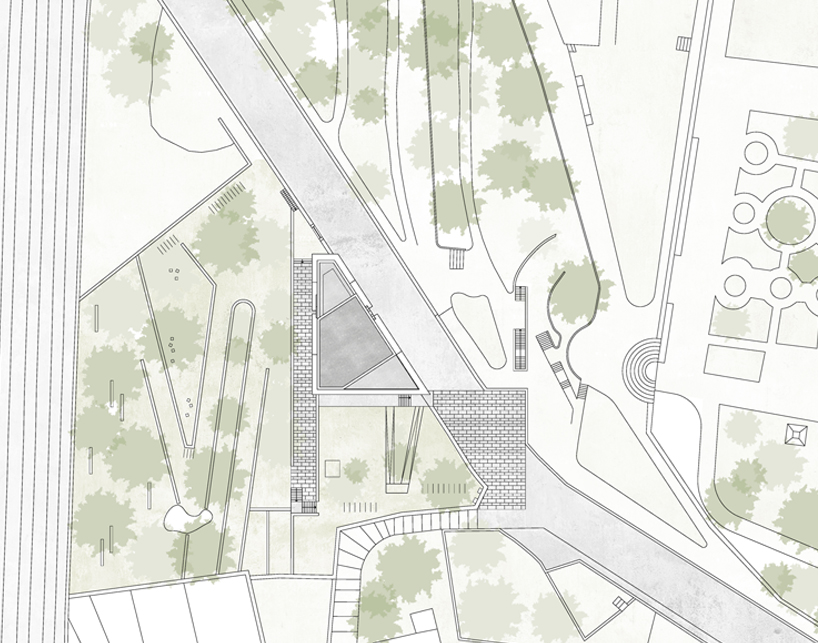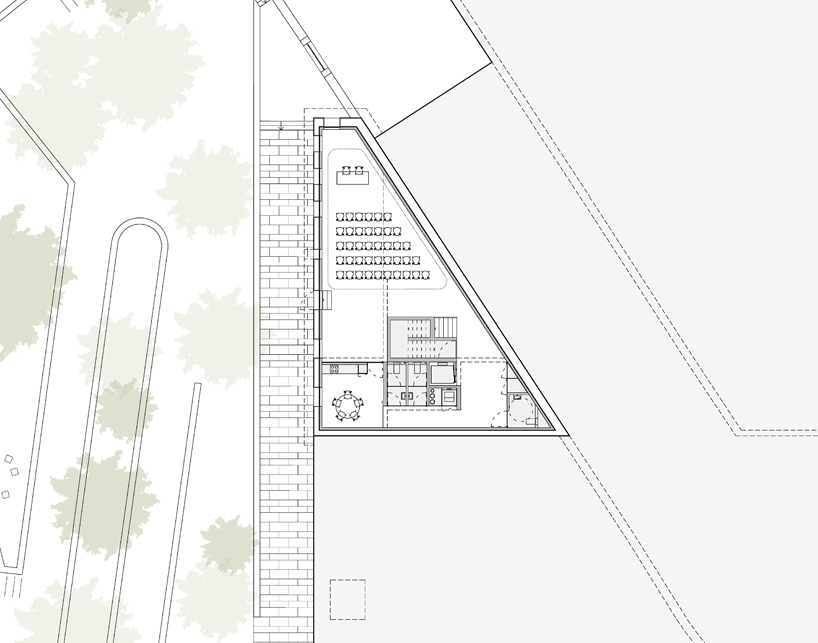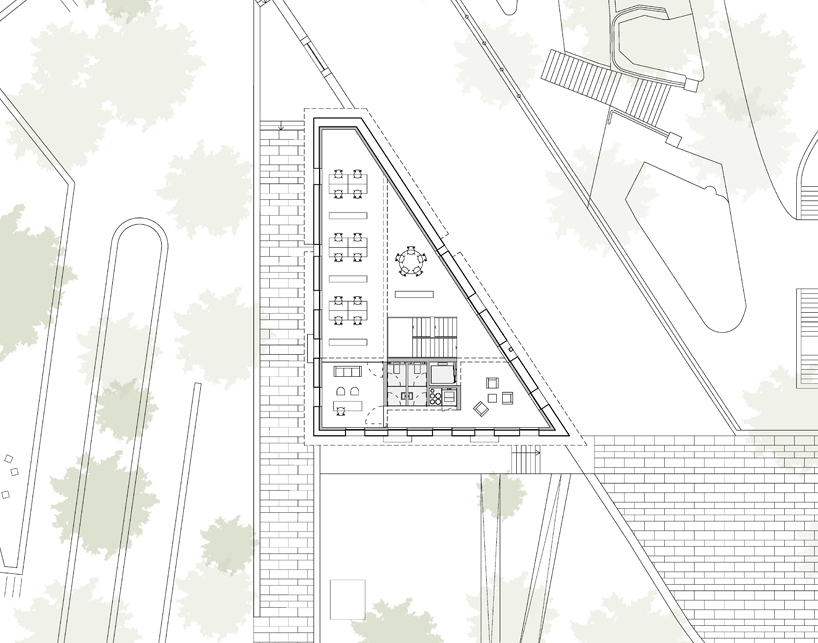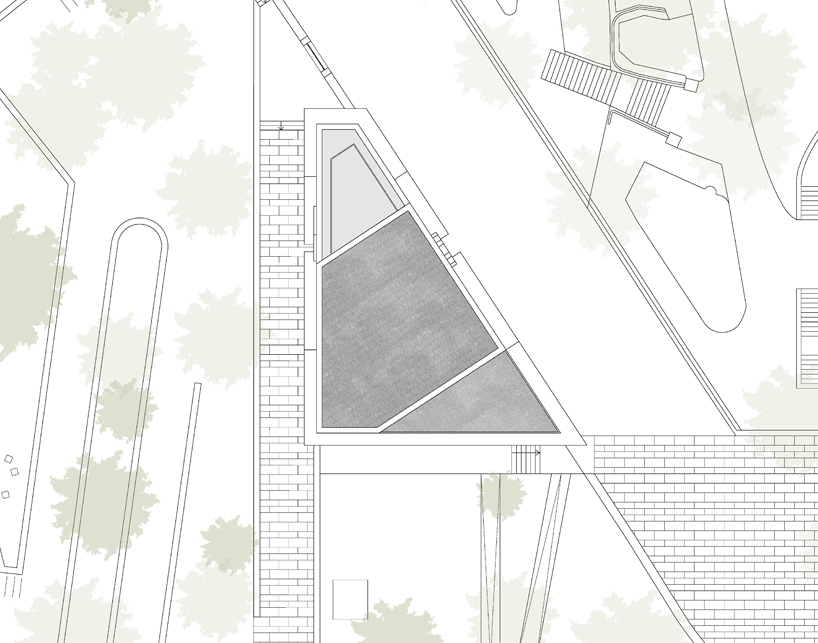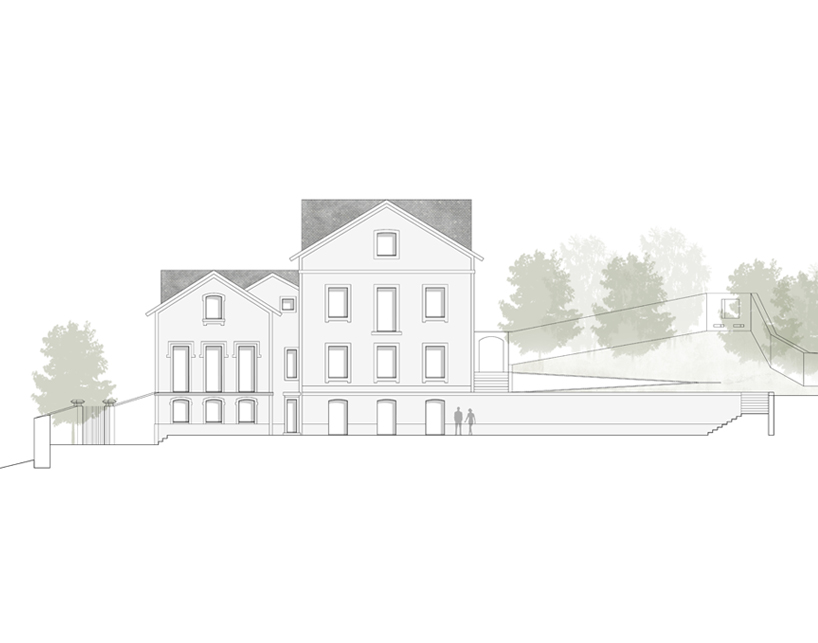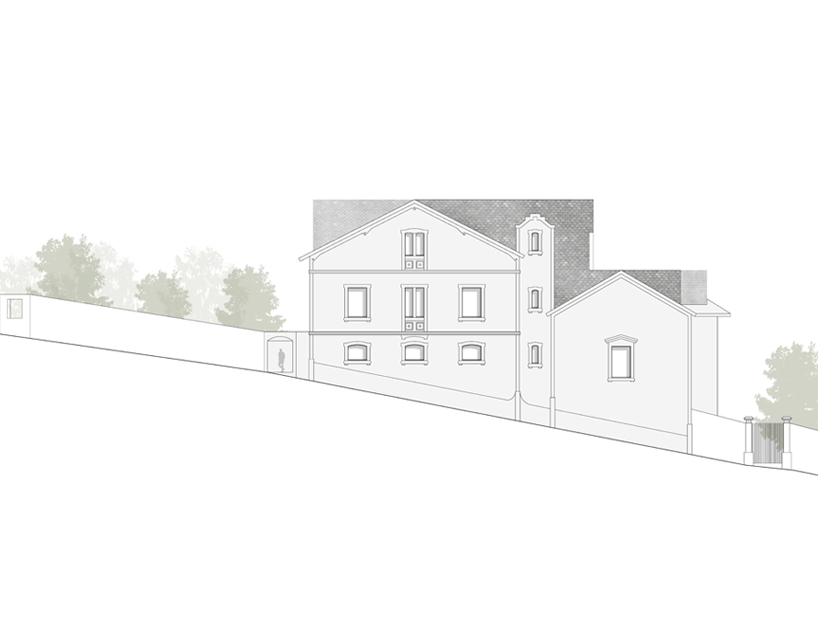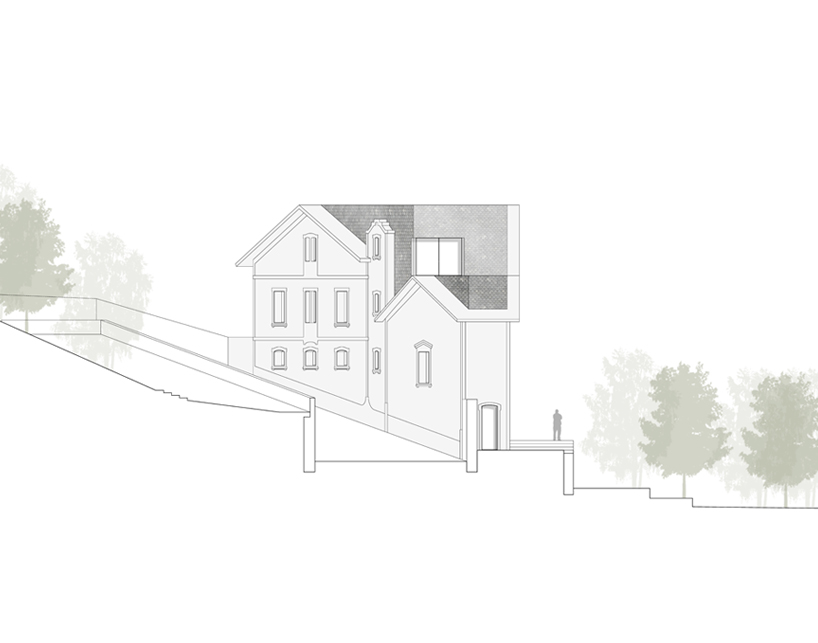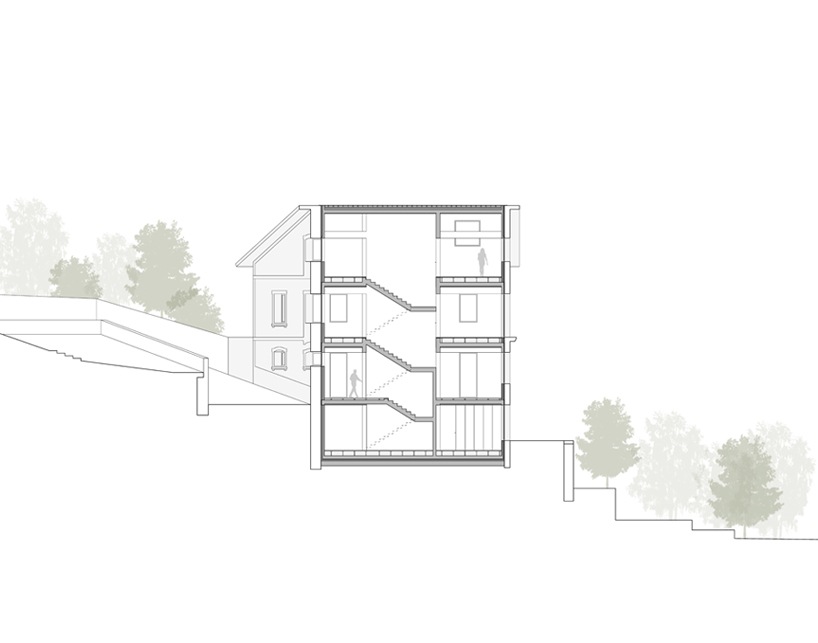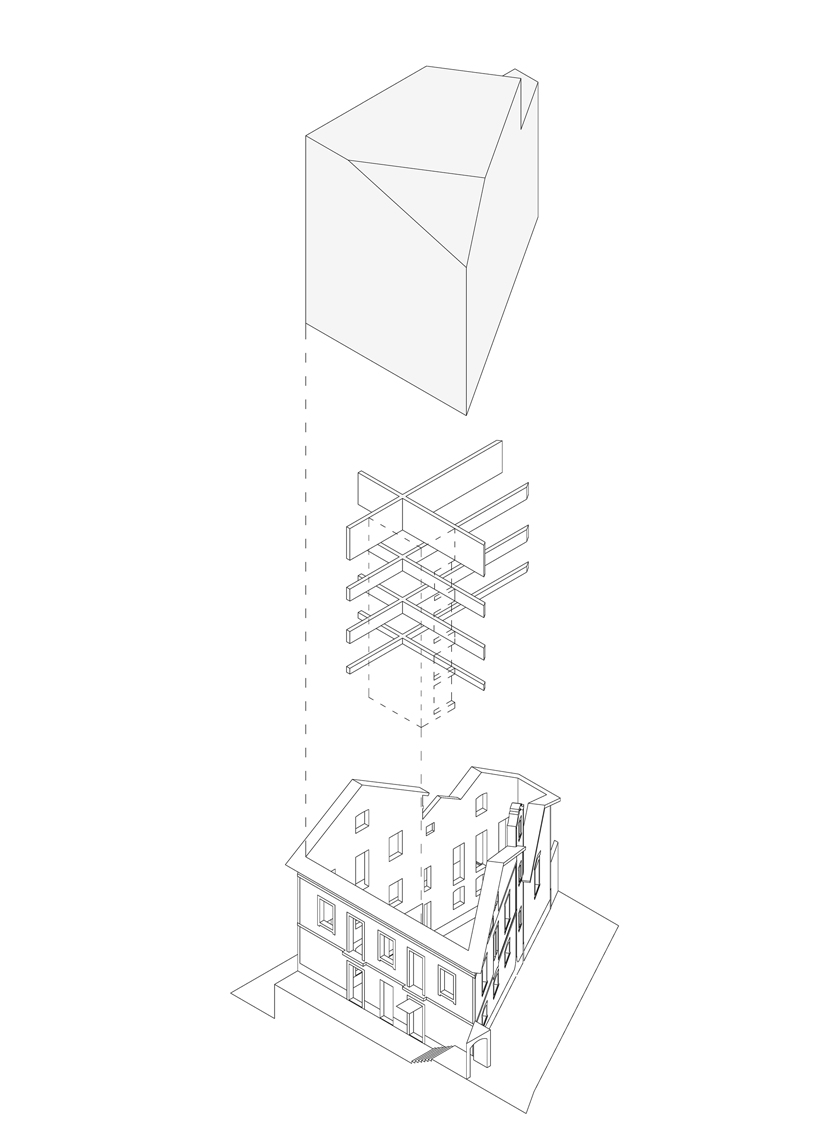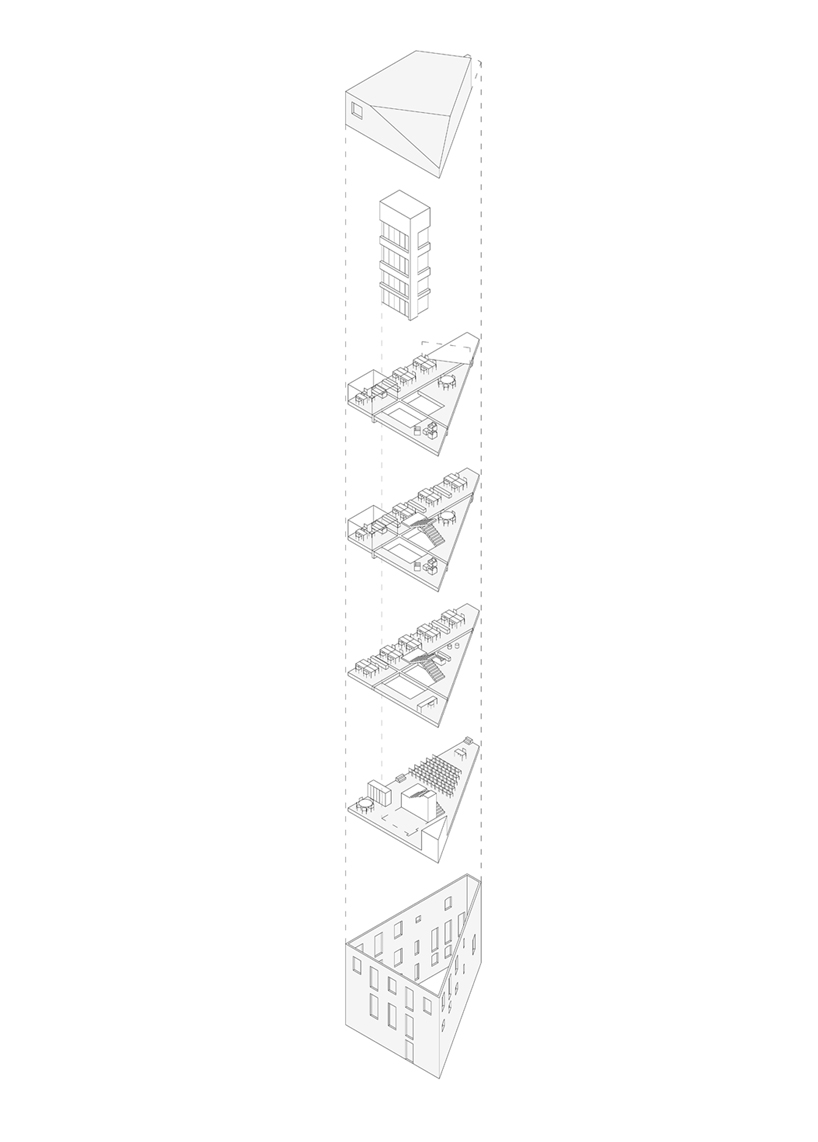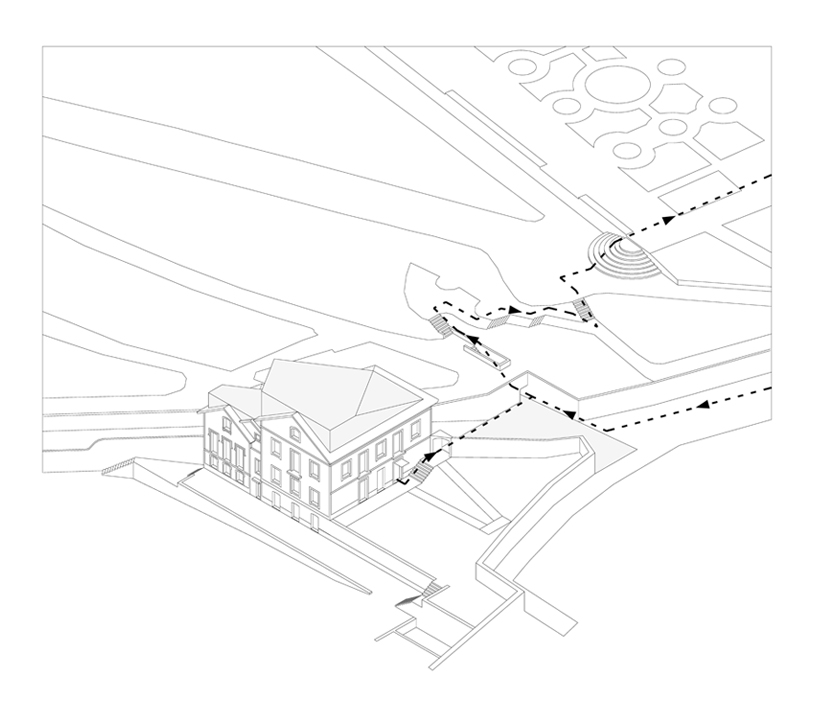☉ Porto Water Department is a second prize competition entry by depA and Pablo Pita developed in 2014. It is located in Quinta de Baixo Portugal in a rural setting. Its scale is extrasmall. Key materials are stone and wood.
Working on a preexisting building implies being aware of its importance within its context. Even thought the site could be related to the old manors that defined the outskirts of Porto in the beginnings of the 20th century, its biggest heritage can be summarized to the expressive granite stone walls that define the surrounding alleys , the sloped terrain and its dense trees.
The house itself is nowadays a non-classified ruin with severe modifications through time. On the other hand a programmatic change should result in a typologic transformation. The competition expected the development of an office building that should work as a complement to the existing headquarters for the Porto Water Department.
Conceptually the project stands on the idea of a new volume that is set inside of the old manor’s carcass, using it as starting point. The original openings define the programatic scheme and also help to define the different spaces. In the interior the building is arranged following a very assertive circulation plan that is set by a clear structural scheme, also helping to establish a spatial hierarchy. This composition is defined by two crossed and expressive beams in each floor, and a vertical core that gathers all the complementary programs. The stair is open and strictly related with the working daily routines.
The new programmatic needs demand a new scale adjustment that results in a typology with fewer subdivisions. It would be pointless to develop a mimetic approach to the uncharacterized manor, rather than an evolutive and flexible scheme.
A clear open-space solution is set in order to adjust to the assertive structural gesture that stitches all the elements in the building. The optimization of the central core allows developing generous working spaces, flexible enough to be adapted and transformed in the future.
The intervention defines a small square that announces the entrance point to the building and sets a turning point for this dead-end alley. From here it is also established the connection to the main headquarters on an upper level of the neighbour site, through a stair integrated in the granite stone walls.



